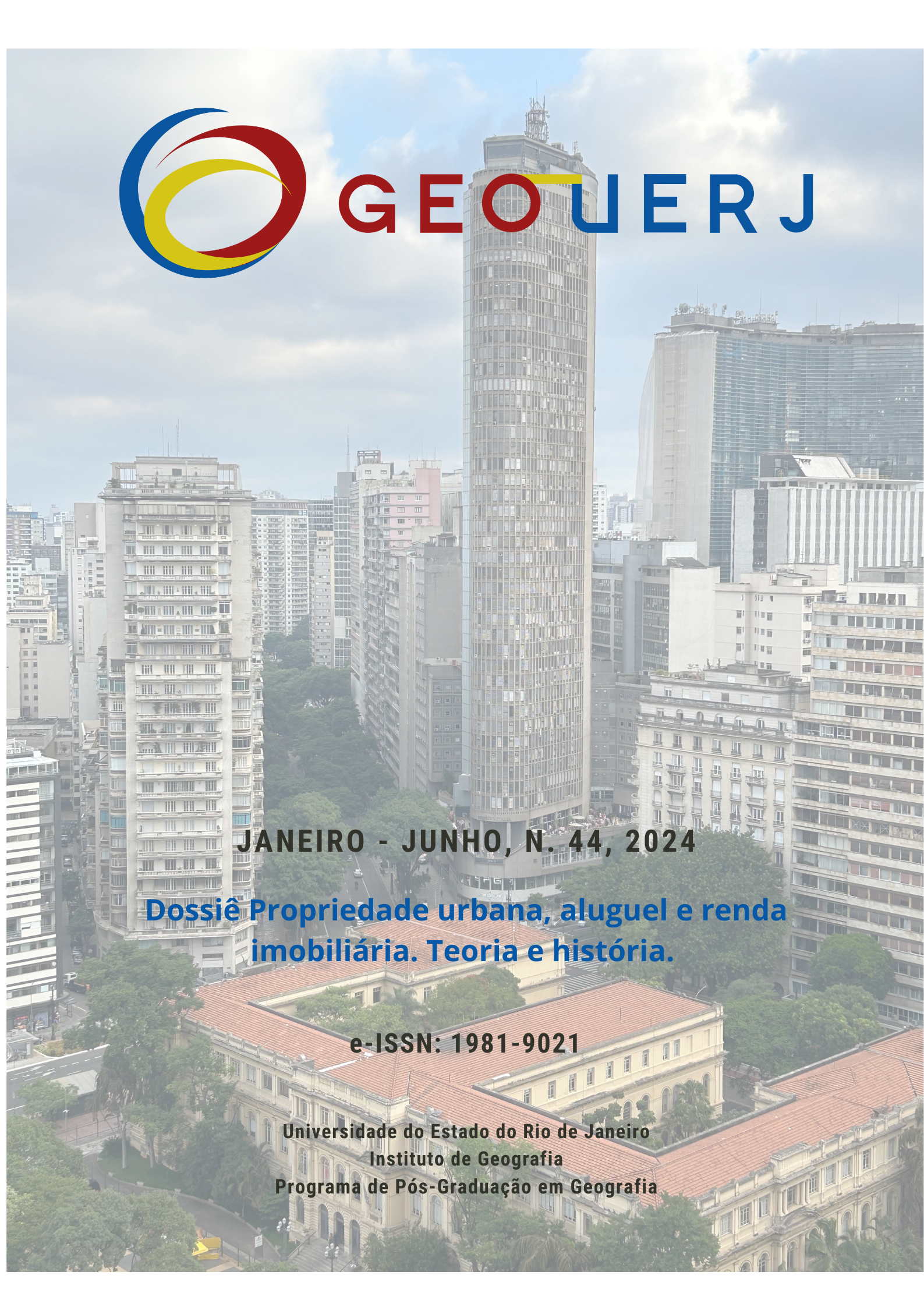INDUSTRIALIZATION AND CHANGES IN THE URBAN SPACE OF BLUMENAU – SC
DOI:
https://doi.org/10.12957/geouerj.2024.83044Keywords:
geografia urbana; geografia econômica; geografia industrial; cartografia histórica.Abstract
This article aims to analyze industrialization as a vector of urban growth in Blumenau. Based on a discussion of the social, economic and political context in which this industrial development took place, it seeks to address the spatial reflexes of this process throughout the 20th century. Using a space-time approach, the methodological procedures involved the use of historical cartography to indicate the main axes of expansion of the urban network over four decades. The use of mixed methods made it possible to integrate quantitative and qualitative data, making it possible to indicate the percentages of expansion of the urban network and its main motivating factors. In this way, the results indicate a direct relationship between the location of the main industries and the houses, many of which are located on the steep slopes around them, configuring risk areas. This is a latent issue, revealing challenges for building a resilient city, capable of facing the climate change scenario of the 21st century.
Downloads
Downloads
Published
How to Cite
Issue
Section
License
Copyright (c) 2024 Tanice Cristina Kormann

This work is licensed under a Creative Commons Attribution-NonCommercial-ShareAlike 4.0 International License.
The copyright of articles published in Geo UERJ belongs to their respective authors with rights to first publication conceded to the journal. Every time that the article is cited and reproduced in institutional repositories or personal and professional web pages the link to the journal web page must be provided Geo UERJ.

The articles are simultaneously licensed under theCreative Commons Atribuição-Não Comercial-Compartilha Igual 4.0 Internacional.


